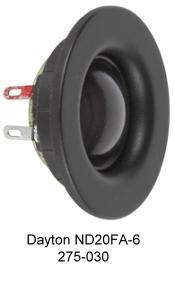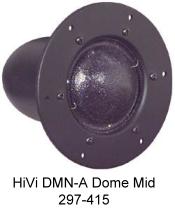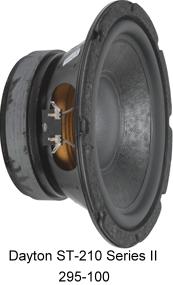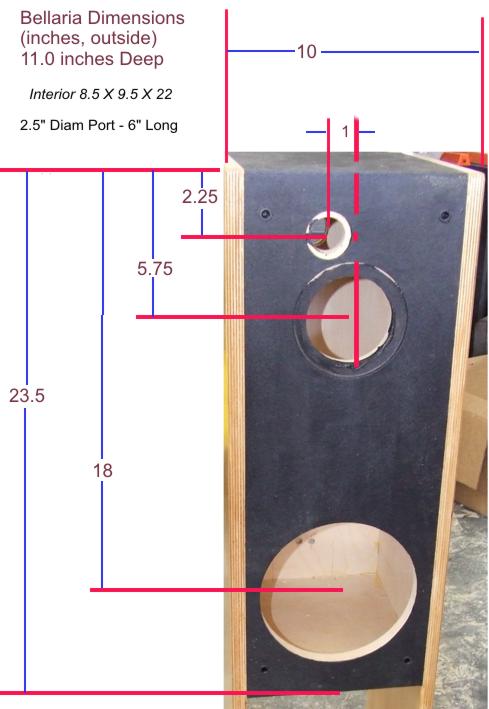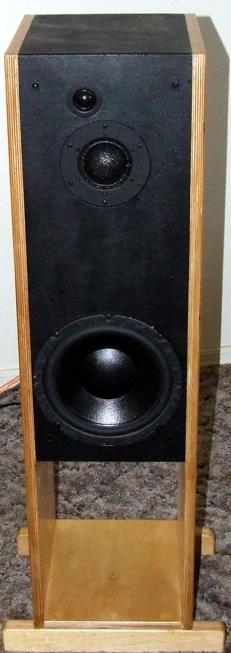 |
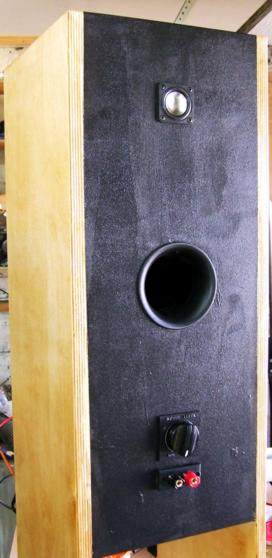 |
Background I really liked the sound and the idea behind the Cyclops. Several people had written to ask about substituting this driver, that driver.... "Why do you always publish designs with closeouts that are already gone?" seems to be a common question. I also needed a housewarming present for some friends who just finished building a new home. So I decided to try a modestly priced 3 way with a rear firing driver -- using readily available drivers. A lot of designs out there already use the Dayton RS line, so I decided to try some drivers that aren't used that often. I wanted it to be simple & cheap to build, but visually distinctive. Driver Selection I looked through my inventory and found a pair of HiVi DMN-A midrange domes. I remember looking at these before and saw the vents directly behind the dome. I put them away, thinking they needed a separate chamber. Upon closer exam, I saw that the HiVi's have a sealed rear "bullet" chamber. The slots are there for cooling. They even come with a nice foam gasket. Not as pretty as the Dayton RS domes, but they do grow on you. I considered other mids, but for the price, I didn't find anything that looked more promising. The 3-4" Tangbands looked attractive but required extra chambers and didn't really save much. With the large faceplate and the ability to go fairly high, I decided to go with one of the Dayton Neos. I've tried all three, and I like the ND20FA-6 the best. It seems to be the smoothest, and easiest to work with. Still one of the best deals around. The woofer was the search item. My friend is tied to his ancient, low watt receiver. (Now running some cheap ass prosound 3 ways). The Bellarias are most likely destined for a smallish den/library/inner sanctum. I wanted something fairly efficient, that would go fairly low, in a smallish box. (Kinda sounds like the holy grail of woofers doesn't it?) I wound up with the Dayton Series II 8 inch. Lots of folks have used the "standard" Dayton line in economy designs, I hadn't seen many of the Series II. With 91 db sensitivity & 8 ohm nominal impedance, this looked like a good candidate. The response graphs looked useable out to 1000 Hz or so. I'm virtually certain this an Emminence product based on the packaging and design. The black cork gasket is bfugly, but the cone is stiff, and well coated. After modeling, I wound up with a 1 cu ft box, tuned to 42 Hz. (F3 = 38 Hz) For the rear driver I wanted to try something that went a bit lower than the ND20 that I used in the Cyclops. I considered the HiVi B1S (which would probably be fine in retrospect more on that later). While I couldn't find any specs, I took a chance on the Tang Band W1-1070SE 1" Driver. I thought it looked cool too. I figured that I could empirically determine the polarity. So I ordered a pair of 15 watt Lpads, & the Tangbands. |
|
|
|
Box Design Based on my design of the Cyclops, I had difficulty getting the mid to woofer phasing correct when the woofer and mid were close together. Reasoning that center to center distance would establish a convenient crossover point, I worked backwards. Using 1000 Hz as guesstimated crossover, I calculated a maximum spacing of about 13 inches between woofer & mid. Pushing the tweeter to about 35" above ground gave me the layout you see here. Dipole aficionados advocate the wide open sound of exposed mids. I wanted to see what would happen I took my ambience tweeter down a few octaves. The Tangband looked like the best economy choice for wide range an ease of mounting (1.5" hole). When I examined the Tangband, I could see that it would need some kind of back chamber (coils are visible thru openings on the side.) I chose a 4 oz vitamin bottle (below). I hot-melt glued it to the hole behind the Tangband, & stuffed it with dacron. I wanted a tall slender tower as that seems to have the highest SAF. With a couple of active young boys in the house, I also figured the boxes ought to be fairly stable & durable. I wound up making the sides, back and base out of 3/4 Baltic Birch. The Baffle and top are MDF. (I've never had issues with mix and match.) I didn't really want to spend a ton of time on finishing/veneering either. I ran a 1/8" radius router bit around all the birch edges. I then concocted custom mix of dye stain and shellac (Light golden brown, 1# cut) and padded on the shellac. Followed up with 3 coats of Fuhr 375 acrylic. The center section is two coats of satin black Duratex applied with a little foam roller. (Yes, Virginia, there will be a grill). |
|
Crossover Design MEASUREMENTS HERE It took a bit of massaging (as always with a 3 way) but I wound up with a fairly simple and and reasonably priced crossover. The basic cross points are about 800 and 4100 Hz. The measurements showed quite a large ground bounce/hole effect from the open bottom and proximity to the ground. As usual, I measure outdoors, from a single setup. I show you warts and all. (The first Curse of the Bellarias occurred during measuring when the power supply on my old shop computer gave up the ghost. I had to calibrate another old computer for measurements.) The Dayton II required a bit of manipulation. I wound up with about 3 db of baffle step, but the caps look a bit strange. The pseudo zoebel circuit both tames the impedance and helps shape the mids a bit. The 10uF isn't absolutely critical, but I thought they were smoother with it in place. I used an 18 ga iron core coil and electrolytic caps for the woofer circuit. The mid circuit is a straight forward 2nd order on both ends. I used a poly cap for the 20, and electrolytic for the 22. Both coils are 20 gauge. The 800 cross is pretty steep (roughly 4th order LR). The upper cross is fairly gentle more like 2nd Order. If you wanted a bit more bass, you could go to 3.0 ohm on the lead resistor. The tweeter circuit is also simple 2nd order. The split resistors help manage phase. If you wish to change the padding, do it on the resistor closest to the tweeter. Rear Fire "Ambience Driver" The rear fire driver turned into my nemesis. Everything that could go wrong, did go wrong. Broken leads, hot melt that wouldn't stick, shorted leads, you name it and it went wrong. I tried a variety of caps on the Tangband. I liked it best at about 33-40 uF. This would have the response down roughly 8 db at 500 Hz. The shallow slope here is much less sensitive to polarity than the 2nd order I used on the Cyclops. Reverse polarity is still the clear winner. With the shallow slope, one can tolerate higher volumes as well. I added the static resistor so the Lpad could work more or less in the center of it's range. Crossing too low made the vocals and mids muddy. Too high and the effects are somewhat diluted. The Tangband has quite a bit of Xmax, and seems capable of going down into 400 range comfortably, but not at high volumes. As it turns out, the extra low response doesn't really help out. I'd say response down to the 1000-1500 hz range is about all that's really needed. Something like the HiVi B1S would do fine. Even a tweeter with low end capability if you wanted to spend the $$. What do you get for the extra $25 bucks? Omni directional sound. Things don't change much as you move around the room. The stage is much bigger & deeper. It's also less distinct. If you're one of those "sweet spot" audiophiles who rivets their chair to the floor, backfire ain't for you. But if you like to listen while your working, cooking or puttering, it's a worthwhile addition. Oggi, ho ricevuto soltanto la salciccia verde --Luigi Alas I cannot do a complete work up on the "backfire" effect. After four trips to the workbench trying to fix all the wiggly niggly crap that broke, one of my Tangbands gave up the ghost about 3 minutes into demo. Even without the backfire (I would consider that optional) this is a very capable three way. Nice punchy bass, a wee bit more forward, a little bit hotter on the top end than the Cyclops. I'll eventually sit down with my golden eared friends for an A/B session with the Cyclops. I can say that the Bellaria are capable of very loud, very clean sound. Even on crappy old hard rock MP3s, played at loud levels (for a 50+ guy).
14 June 2007 -- I brought in Joseph, my "golden ear" speaker swami for all things audio. We benchmarked against the Cyclops & ACI Jaguars. After a proper flogging with a mix of techno & classical, we found some room for improvements. Revisions to the write up below (& the crossover) reflect tweaks to the deficiencies we found. In the original go around, I had a 2.7 ohm padding resistor on the DMN-A. We found things a wee bit too dark and recessed based on our benchmarks. I dropped it to a 2.4 and think we have a pretty nice balance now. The write up has been "adjusted". PE shipped me a replacement for the burned out Tangband. (Still some of the best customer service around). I finally settled on a plain 33 uf cap & 2.7 ohm resistor for the rear firing driver. I got them all set up and spent a couple of hours with some old friends (Linda Ronstadt, Allyson Moyet, Chris Isaak, Santana, Alan Parsons, Pink Floyd, the Doobies, BS&T... Need a good 2 cut demo, try Linda Ronstadt's "Ruler of My Heart" from the "We Ran" CD along with "Try Me Again" from "Hasten Down the Wind") I thought these were really at ease. Very smooth like the Ruby's, with no shortage of honest slam, useable response down to 30's. Dare I say almost too much bass... Really "right" on female vocals. Despite a very live room, and nearly painful levels (for me) I never felt like I needed to turn them down from fatigue. The HiVi will not do quite the detail that the RS-52 dome does, but it's still a very capable $27 mid, and much easier to cross. Head to head, the DMA has a bit more of a warm & smoky sound, not quite as "in your face" as the Dayton. Overall, the DMN-A vs RS-52 comparison is consistent with typical metal dome vs fabric dome tweeeter debates. When crossed high enough the ND20 will do everything you can ask of a tweeter. I can definitely stand a bit more air with the high crossover point. The small diameter & dome size make it a lot easier to cross that high. I think the driver offset helped smooth out response. The behavior of the ambience driver (AD) on the Bellaria does not seem as dramatic as it did on the Cyclops, nor does it seem nearly as twitchy. On the Cyclops, there is a very narrow volume range where the effect is positive. Too loud muddies the sound, too faint and it disappears. With the Belllaria there's a lot more room for fine tuning and less of a difference between "on and off". We will speculate and attribute the additional flexibility to:
As you play with the AD levels, you can literally expand or collapse the sound stage. With the added depth comes some loss of instrument placement, but a more stable image as you move about the room. Off axis tweeter response is smoother and locating the actual box position becomes more difficult. Some of the trade offs and characteristics of the AD:
Personally, I enjoy the effect. I've never been to a live performance that wasn't a combination of direct & reflected sound. (Old Doc Amar has some valid ideas, he just sells them for far too much.) I'll accept a 10 foot wide drum set to get the consistent image while moving about. If you're a rapper, rocker or techno freak, there's no reason to not go AD. Everything has been over mastered beyond all recognition -- might as well be in the front row. If you build these, it's up to you to decide if it's worth the extra $$. Unlike many of my other boxes, I think headbangers can build this one, feed it some watts, and feel fairly safe it won't blow up. They will play loud with modest power. I'd turn down the AD as the volume goes up -- probably to save it from burning out. They are fairly neutral, tending toward "warm" with very solid bass. I think they'll handle everything pretty well, but rockers will get the most fun out of them. This is a heck of a lot of speaker for a pretty small foot print and $140 each for parts & drivers. |
|
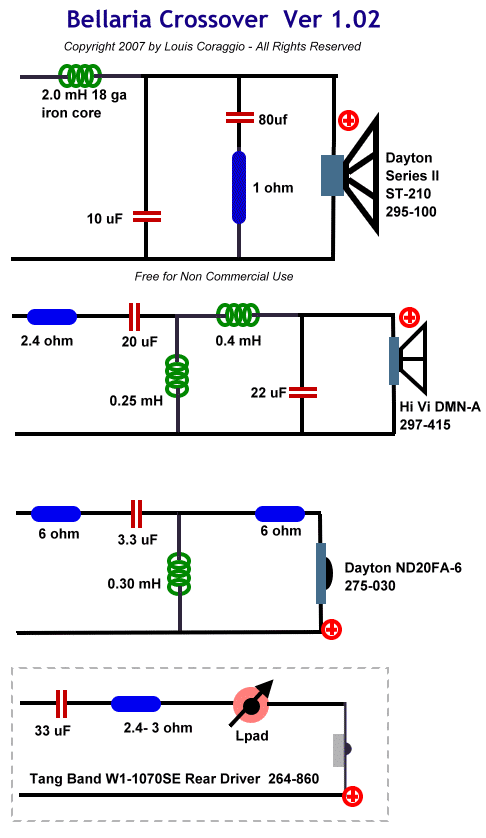 |
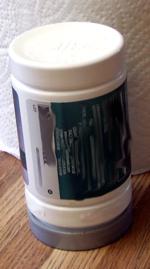 Recycled High Density Poly Ethylene cylindrical rear chamber with inverted aspherical backwave deflector before application of audiofecal exaggeration and magical electron smoke. |
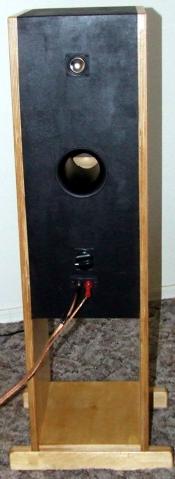 |
|
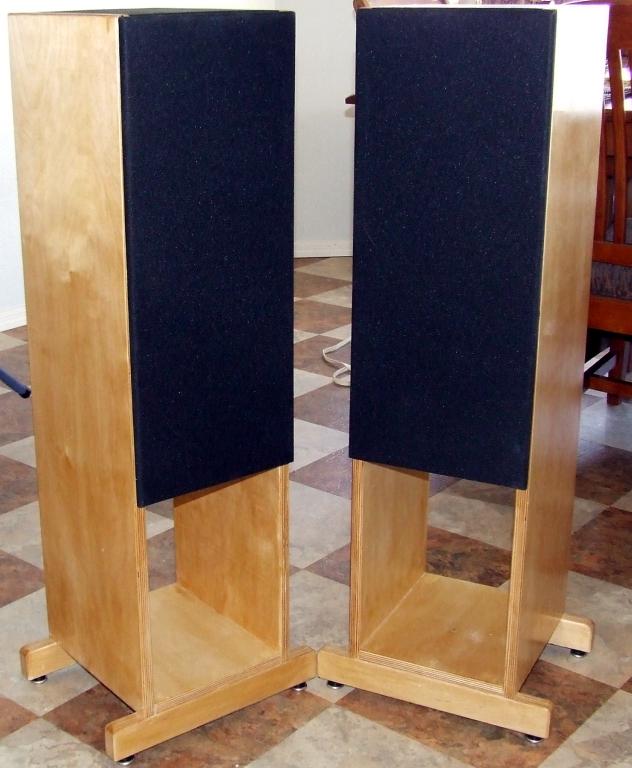 |
|
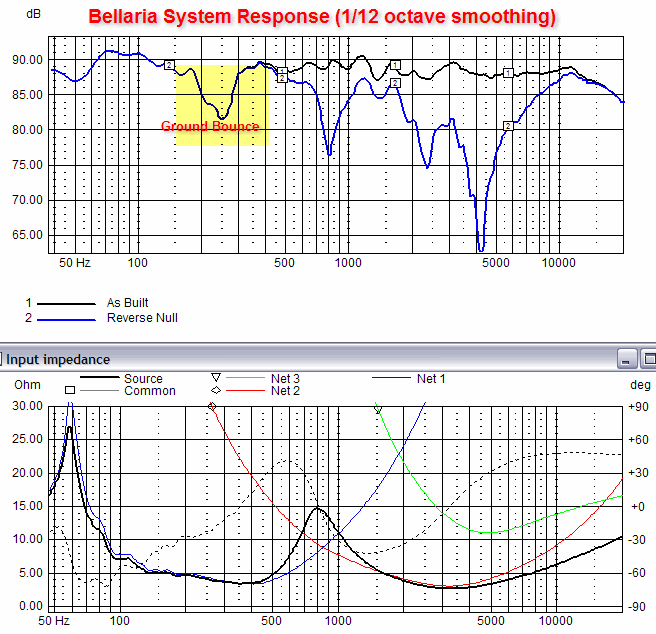 |
|
